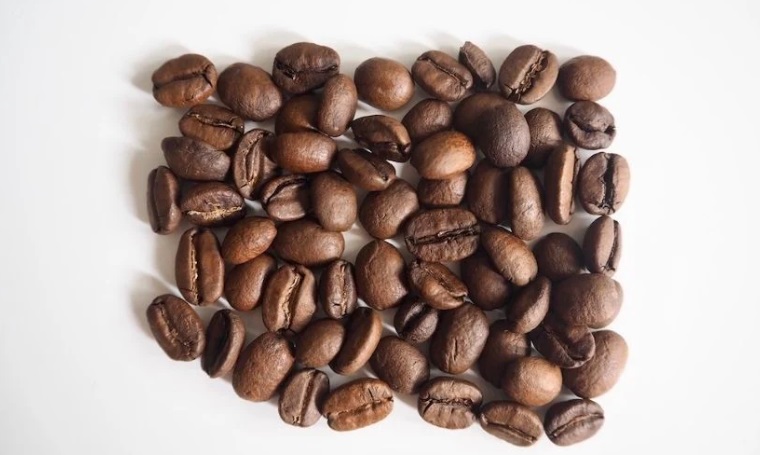
Medium roast coffee strikes a perfect balance between the bright acidity of light roasts and the bold intensity of dark roasts, making it a favorite among coffee enthusiasts around the world. This roast level highlights the unique characteristics of the coffee bean while providing a fuller body and a richer flavor profile. Its popularity is well-founded as it offers a versatile taste that appeals to a wide range of palates.
Key Considerations When Choosing Medium Roast Coffee
- Origin: The region where the coffee beans are grown has a significant impact on taste. Beans from different areas can offer flavors ranging from fruity and floral to nutty and spicy.
- Roast Date: Freshness matters. Look for coffee with a recent roast date to ensure you’re getting the most flavor out of the beans. Ideally, coffee should be used within weeks of its roast date to capture the peak of its taste.
- Flavor Notes: Medium roast coffees are known for their balanced flavor profiles. Decide what taste preferences you have—whether you like sweet, fruity, chocolatey, or nutty flavors—and choose a roast that matches those preferences.
- Ethical Sourcing and Freshness: Opt for coffees that are ethically sourced. Coffees that are Fair Trade, Rainforest Alliance Certified, or USDA Organic not only support sustainable practices but often indicate a higher standard of bean quality and freshness.
Comprehensive Reviews of Top Medium Roast Coffees
Review of Volcanica Ethiopia Guji Medium Roast
The Volcanica Ethiopia Guji Medium Roast is well-loved for its vibrant and complex flavor profile. This coffee showcases tasting notes of dark chocolate, peach, and nectarine, offering a classic Ethiopian coffee experience with a bright and full-bodied feel. It’s particularly noted for its slightly lighter roast, which enhances its natural acidity and brightness, making it an excellent choice for those who enjoy a more nuanced cup.
Pros:
- Rich and complex flavor profile.
- Brighter than typical medium roasts due to its lighter roast level.
- Single-origin beans ensure consistent quality.
Cons:
- May not be suitable for those who prefer a traditional, darker medium roast.
- Higher acidity might not appeal to all palates.
User Feedback: Customers appreciate the distinct flavor notes and the freshness of the beans. However, some note that the lighter roast level might stray a bit from what traditional medium roast drinkers expect, influencing their brewing method choice.
Caribou Coffee Caribou Blend Review
Caribou Coffee’s Caribou Blend is praised for its approachable and consistent quality. This blend features a harmonious mix of sweet, spicy, and berry notes, culminating in a bittersweet cocoa finish. It is widely available and consistently delivers a smooth and balanced cup, making it a go-to choice for everyday coffee drinkers.
Pros:
- Smooth and balanced flavor suitable for daily consumption.
- Available in both whole bean and ground forms.
- Rainforest Alliance Certified, ensuring sustainable and ethical production practices.
Cons:
- Some users report variability in flavor from batch to batch.
- The blend may sometimes taste bland depending on the batch.
User Feedback: The general consensus among users is positive, especially regarding its accessibility and smooth taste. Nonetheless, occasional complaints about inconsistency highlight the importance of proper storage and quick consumption after purchase to maintain freshness.
Kicking Horse Certified Organic Medium Roast Coffee Review
Kicking Horse Certified Organic Medium Roast Coffee is renowned for its deep, invigorating flavor and commitment to organic and fair-trade practices. This medium roast blend features a rich amalgamation of red grape, sugar cane, and milk chocolate notes, offering a robust yet smooth flavor profile that’s both bold and nuanced.
Pros:
- Rich and complex flavors with hints of fruit and chocolate.
- Certified Organic and Fair Trade, ensuring ethical sourcing and environmental stewardship.
- Works well in various brewing methods, including drip and pour-over.
Cons:
- The beans may appear overly oily, which could affect grinder performance.
- Some drinkers might find the flavor too bold for a traditional medium roast.
User Feedback: Most users report a satisfying experience with the taste and ethical assurance of this coffee. However, a few note the oiliness of the beans as a potential drawback for certain types of coffee grinders. The boldness of the flavors, while generally seen as a positive, might not cater to those who prefer a lighter, subtler medium roast.
How to Brew the Perfect Cup of Medium Roast Coffee
Brewing the perfect cup of medium roast coffee involves understanding how different brewing methods impact the coffee’s flavor profile. For French press, this method allows for full immersion and a richer extraction, enhancing the body and revealing the subtle chocolatey notes typical in many medium roasts. Use a coarse grind, hot water just off the boil (about 200°F), and brew for four minutes for optimal results.
The pour-over technique highlights the bright, acidic notes of a medium roast. A medium-fine grind works best here, with water temperatures between 195°F and 205°F. The brewing time should be about 2-3 minutes, depending on your pour speed and consistency, which allows the subtle fruity flavors to shine.
For espresso, which compresses the coffee’s flavors into a small, potent shot, use a fine grind. The high pressure of an espresso machine extracts the rich, caramelized sugars and deeper flavors that medium roasts can offer. Water temperature should be about 200°F, with a brewing time of 20-30 seconds.
Each brewing method offers a unique way to experience the diverse flavors of medium roast coffee, so experimenting with different techniques can help you find your perfect cup.
FAQs
What is the difference between medium and light roasts? Medium roasts have a more balanced flavor, aroma, and acidity compared to light roasts, which often have a milder body but sharper acidity. The roasting process for medium roasts allows for a richer development of flavors, making it a favorite for those who appreciate a fuller coffee taste without the bitterness of darker roasts.
How is coffee strength determined? Coffee strength is generally influenced by the coffee-to-water ratio, rather than the roast level. A higher ratio of coffee to water results in a stronger brew. The grind size, brewing method, and time also play significant roles in the extraction process, affecting the overall strength and flavor of the coffee.
Final Thoughts
Choosing the best tasting medium roast coffee is all about personal preference. Explore different beans, roasting styles, and brewing methods to discover the flavors and profiles that delight your palate the most.









